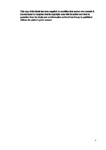THE EVALUATIVE CHAMELEON: THE VALANCE OF OBSERVED ACTION OUTCOMES DETERMINES AUTOMATIC IMITATION
| dc.contributor.supervisor | Bach, Patric | |
| dc.contributor.author | Sharps, Helen | |
| dc.contributor.other | Faculty of Health | en_US |
| dc.date.accessioned | 2021-05-06T07:22:06Z | |
| dc.date.available | 2021-05-06T07:22:06Z | |
| dc.date.issued | 2021 | |
| dc.identifier | 228957 | en_US |
| dc.identifier.uri | http://hdl.handle.net/10026.1/17087 | |
| dc.description.abstract |
Humans have a tendency to imitate the actions they observe in others, a process assumed to rely on an automatic bottom-up mapping of observed action features to one’s own motor system. In contrast, imitation in children is goal-directed, aimed at achieving the same outcome as the model. This thesis examines whether such an outcome-dependence can also be observed in automatic imitation. In six experiments, participants watched an actor make movements after observing the same movements and evaluated the valence of these outcomes with either compatible or incompatible responses. Chapter 2 showed that automatic imitation depends on action outcomes and showed that it is (1) independent from the visual perspective from which the action was observed, but (2) does require identification with the model. Chapter 3 showed that this outcome-dependency is observed in observations of human interactions but not when this element is replaced with non-human stimuli. In chapter 4, 2 experiments in which, the participants’ own action kinematics were measured in an alternating reaching task firstly replicated the well-known sIOR effect such that participants were slower to reach to the same target as the previous player. In contrast to other studies on this effect these experiments revealed tentative evidence that the effect depended upon whether the kinematics required to produce the response bore a similarity to the kinematics of the action one has just observed. Together, the findings in this thesis reveal that imitation cannot simply be attributed to a simple bottom-up matching of observed actions to one’s own action repertoires. Instead, similar to goal directed imitation in children, automatic imitation may be guided by hierarchical action-outcome representations that are dynamically established when watching others act. | en_US |
| dc.language.iso | en | |
| dc.publisher | University of Plymouth | |
| dc.subject | Imitation | en_US |
| dc.subject | Automatic behaviour | en_US |
| dc.subject | Ideomotor | en_US |
| dc.subject | Human | en_US |
| dc.subject.classification | PhD | en_US |
| dc.title | THE EVALUATIVE CHAMELEON: THE VALANCE OF OBSERVED ACTION OUTCOMES DETERMINES AUTOMATIC IMITATION | en_US |
| dc.type | Thesis | |
| plymouth.version | publishable | en_US |
| dc.identifier.doi | http://dx.doi.org/10.24382/615 | |
| dc.rights.embargoperiod | No embargo | en_US |
| dc.type.qualification | Doctorate | en_US |
| rioxxterms.version | NA |
Files in this item
This item appears in the following Collection(s)
-
01 Research Theses Main Collection
Research Theses Main


